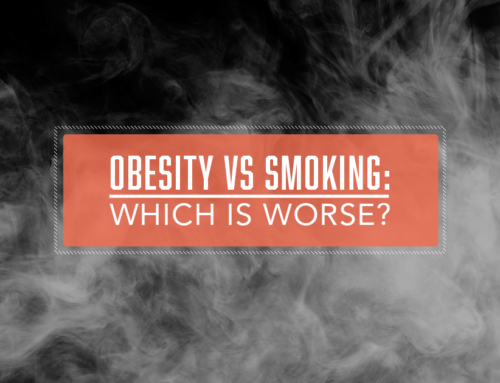Turn down the thermostat and you might lose a few pounds – that’s the message British research scientists are delivering this week.
They see a clear causal link between rising indoor temperatures and obesity. The conclusion is compelled by scientific facts about the body’s involuntary reactions to heat and cold. When we’re extremely cold, our bodies have a protective involuntary reaction in the form of skeletal muscle contraction that generates heat, burning extra calories in the process.
But there’s no need to go to extremes to get the fat-burning benefit of cooler climes. Apparently even in a chilly room – say, with a temperature of low 60s – people generate extra heat without shivering. Non-shivering thermogenesis, as it’s known, burns so-called ‘brown fat’ (stored typically in the upper back and side of the neck). which acts like a sort of fuel to our internal furnace, a process that has to be kicked into action by, as it turns out, turning down the thermostat about six degrees — a difference that, over a month could amount to as much as a pound of burned energy.
The British research team reporting this finding included scientists across educational disciplines, including health psychologists, biologists as well as specialists in indoor environmental effects research.
This ‘hot makes fat cold makes thin’ hypothesis was first advanced in a peer-reviewed article putting forth 10 “putative contributors to obesity, including environmental endocrine disruptors, pharmaceuticals that induce weight gain, sleep debt, older mothers having children and epigenetic changes, or environmental factors that influence the expression of our genes.
This updated research, published in the journal Obesity Reviews, looked specifically at indoor temperatures, reporting that since the advent of commonplace central heating, room temperatures have increased at rates similar to increases in the population’s obesity.
The study’s authors noted that while in the past people would heat the main living areas but keep bedrooms cool both day and night, which forced their bodies to automatically adjust to different temperatures as they move through the house – an involuntary reaction that took energy.
But in the past three decades, the entire house has stayed warmer, longer; as well, people are often driving or being transported rather than walking, and children spend less recreational time in outdoor movement.
The result is the body’s automatic and involuntary reduction of the production of brown fat…and with it, a reduction in the body’s ability to burn energy.
Turns out that turning down the thermostat will bring the brown ‘furnace fat’ back – and whoever thought it would take back fat to get thin? But the facts are there in our DNA, which programs babies with a substantial cushion of brown fat at birth, a supply that depletes naturally over the course of a lifetime, but are replenished when the body responds to exposure to cold.
Now for the bad news, cheesecake lovers: turning down the thermostat won’t result in weight loss if you don’t stop overeating and being sedentary. Being warm all the time is an environmental factor that contributes to obesity, but not a major cause. Rather, manipulating the thermostat of your environment could similarly help you stimulate your internal thermostat, which can lead to a rebalancing of the body and a greater ability to regulate weight.
Weight loss surgery is another way to ‘reset’ the body’s metabolic thermostat after it’s gone awry in an environment that has become rife toxic substances — according to the 2009 President’s Cancer Panel Report, only a few hundred of the more than 80,000 chemicals in use in the United States have been tested for safety. For many, the term weight loss surgery is associated with gastric bypass, a procedure that can be somewhat frightening to contemplate given its no-holds-barred invasiveness: up to 80% of the stomach is removed, and bowels and intestines are re-routed in a lengthy surgery that is not always able to be performed laparoscopically. The weight loss results are undeniable, and frequently dramatic: patients having the RNY gastric bypass typically lose up to 70% of their excess body weight.
Although the surgery can sound intimidating, complications are extremely rate, and there are well-established protocols for early identification, including longer hospitalization and post-procedure imaging studies for leak detection or other irregularities.
However, ever since the advent of adjustable gastric banding, it has been in this past decade, by far, the most frequently chosen option for weight loss surgery. The procedure is laparoscopic and takes only twenty minutes, and typically results in successful weight loss – most patients lose about 50-60% of their excess weight. The reduced risk of complication has made the procedure especially popular among patients on the lower end of the obesity spectrum – i.e. those with a BMI of 30-35. Allergan’s LAP-BAND has been particularly successful, in large part because the American medical device manufacturer actively sought out gastroenterologist surgeons in Mexico, where lower hospital fees meant patients could get the procedure for up to 75% less than prices in the U.S.
The strategy worked so well that some Mexican gastroenterologist surgeons placed more than 5,000 bands before the FDA had even approved the device in the United States. US patients who wanted to work with the most expert obesity surgeons found themselves in a happy position of getting the best surgeons and hospitals (Monterrey, Angeles) at the lowest prices. Today, a LAP-BAND at a top private hospital in Mexico will cost about $5,000, as compared to prices in the US which range from about $18,000 all the way to $35,000 depending on what area of the country you live in.





